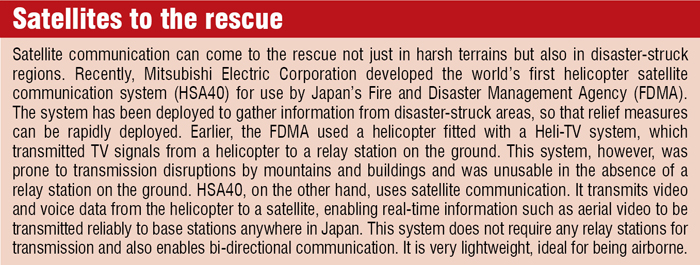
Like in the mountains and other unreachable areas, satellite communication is the best option here too—and has been used since many years. However, the legacy satellite infrastructure, the UHF Follow-On, was found to be unreliable in latitudes higher than 65 degrees north. As these satellites are in geosynchronous orbits above the Equator, their beams cover most of the Earth, but fade in the polar regions.
In the near future, the Navy is betting on its mobile user objective system (MUOS) and the commercial satellite system Iridium, which is set to launch its next-generation fleet of spacecraft in 2015. Two of the MUOS satellites are already in orbit, and two will be up soon. These MUOS satellites will have more beams, more power and a waveform based on 3G-wideband-spread spectrum. Therefore these will be capable of bending around the curvature of the Earth. The reach of the current satellites has been tested well above 80 degrees now. They provide 24-hour coverage of the entire Northwest Passage. Although the communication used is narrow-band, they were able to send decently large data files of around 289MB. Once the remaining satellites are also ready, there will be a seamless handover from one spacecraft to another as one satellite rises in orbit and the other falls.
When their new satellite system is up, Iridium is expected to be of great help, supplementing the coverage of the MUOS satellites and extending connectivity to explorers and civilians too. Iridium’s 66 satellites will operate in low-Earth orbit, ensuring that every point on the planet is covered by at least one satellite. That means you and I will be crossed by their beams too, wherever we are.
Well, magical beams, invisible signals, bright balloons, unheard acoustics, all these wonderful communication technologies ensure we are always within reach of help. Should we be in danger, we can be in touch with anybody from anywhere and access any information whenever and wherever we want. The world is in our hands—literally—whether we are deep within the bellies of the Earth or high up in space. What was once the dream of kindergarten kids later became the realm of scientists and the play field of industrialists, only to become reality today!
The author is a technically-qualified freelance writer, editor and hands-on mom based in Chennai







